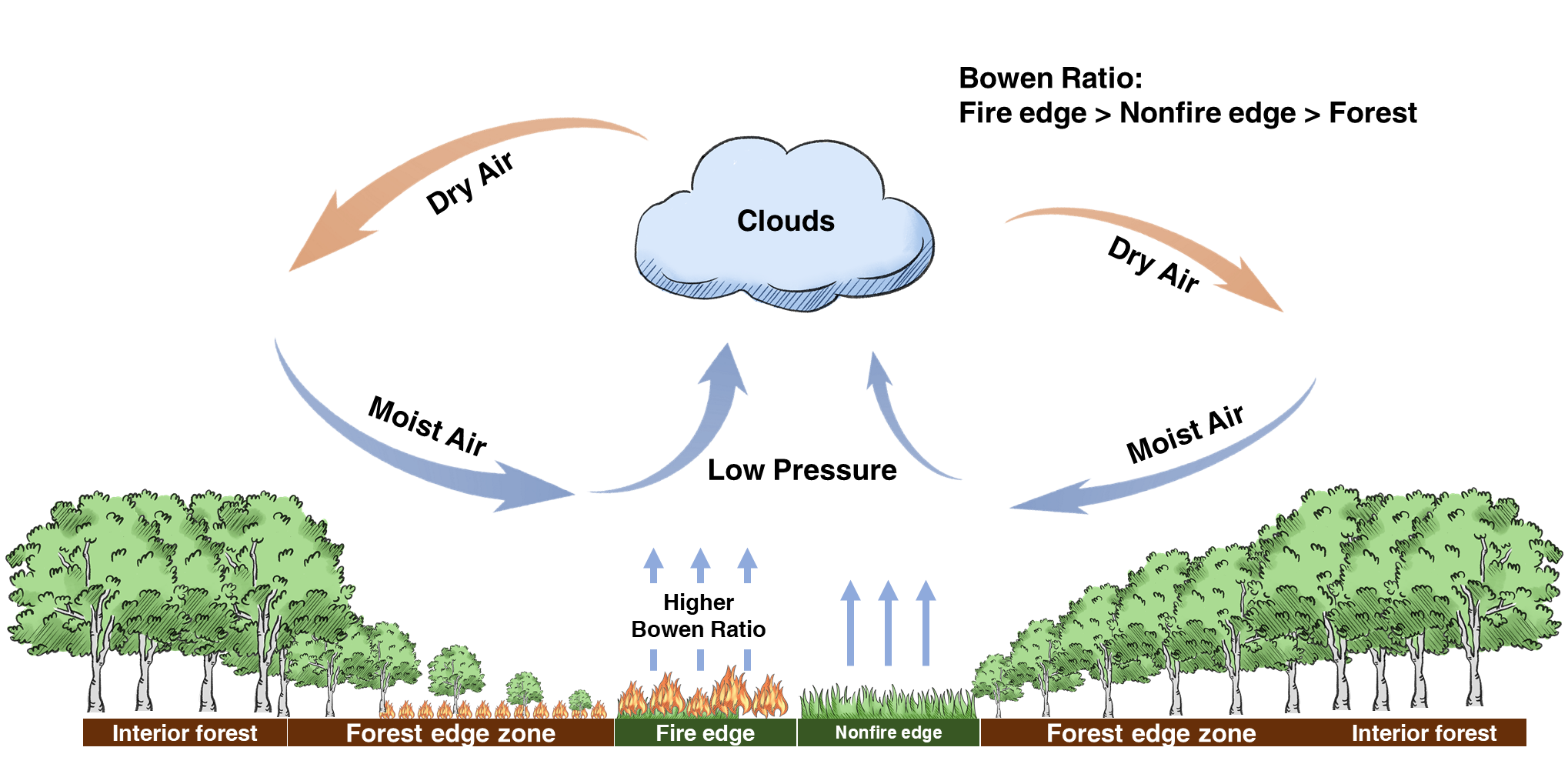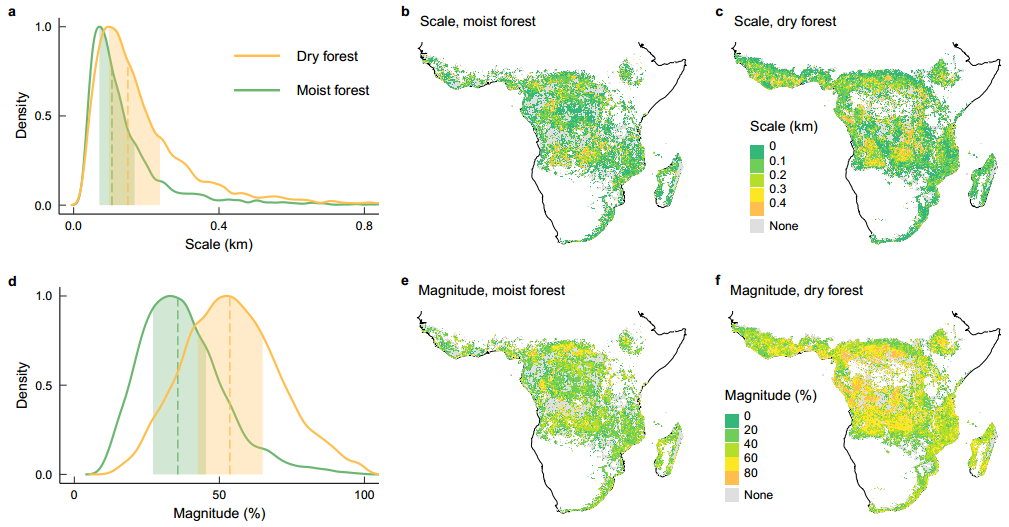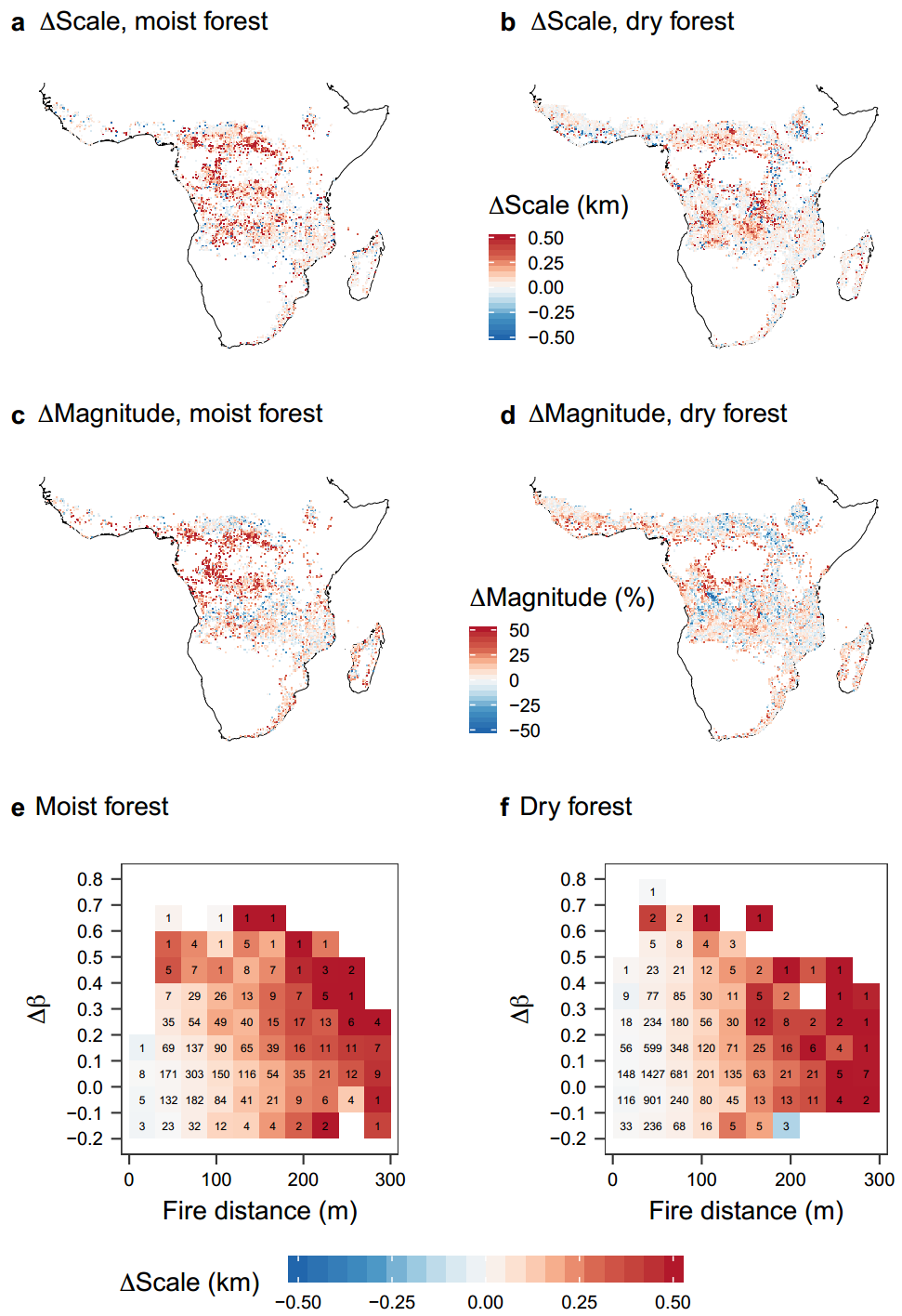Tropical forests are an important part of global carbon cycle. In the past few decades, they have suffered severe deforestation and forest degradation, leading to forest fragmentation and the formation of a large number of forest edge areas. Forest edge effect refers to the phenomenon that the biomass of the edge of the forest is significantly lower than that of the internal forest due to high temperature, dryness, and high wind speed. At present, due to the lack of observation data of large-scale and high-resolution, the distribution characteristics and influencing factors of forest edge effects are still unclear.
Recently, LI Wei's research group of Department of Earth System Science of Tsinghua University has joined with many research institutions at home and abroad to conduct research on forest edge effects in Africa. The paper used above-ground biomass and forest cover data of high spatial resolution, and found that for dry forests and wet forests in Africa, the distances that edge effects can affect are 0.11 and 0.15 km, respectively (Figure 2), resulting in a total carbon deficit of 4.06 PgC. Fire intensifies the edge effect of the forest (Figure 3), and the carbon deficit caused by it is 0.9 PgC higher than the non-fire edge. Fire mainly affects the edge effect of dry forest through direct effects (the forest is directly burned into the forest); at the same time, it enhances the edge effect of wet forest through direct and indirect effects (changing local circulation thus reducing forest air humidity) (Figure 3). Forecasts for the future indicate that between 2015 and 2100, the continued increase in deforestation will increase the area of forest edge, and degradation of these edge forests will cause carbon losses of 0.54 to 4.6 PgC. The research results have important enlightment for understanding mechanisms and effects of forest degradation and formulating relevant forest protection policies.
The above related results were published in Nature Geoscience under the title "Fire enhances forest degradation within forest edge zones in Africa". Doctoral student ZHAO Zhe of Department of Earth System Science of Tsinghua University is the first author of the paper, and Associate Professor LI Wei is the corresponding author of the paper. Collaborators include Professor Philippe Ciais and Dr. YANG Hui from Laboratory of Climate and Environmental Sciences (LSCE), Dr. Maurizio Santoro and Dr. Oliver Cartus from Gamma Remote Sensing in Switzerland, Researcher PENG Shushi of Peking University, Researcher YIN Yi of California Institute of Technology, Professor YUE Chao from Northwest Agriculture and Forestry University, Associate Professor YU Le, PhD students ZHU Lei and WANG Jingmeng from Department of Earth System Science of Tsinghua University. The research was supported by the National Key Research and Development Program of China.
Full text link: https://www.nature.com/articles/s41561-021-00763-8

Figure 1 Schematic diagram of forest edge effect and its forest degradation mechanism

Figure 2 The scale and magnitude of forest edge effects in Africa. (a) Scale and (d) frequency distribution of intensity. (b, c) Spatial distribution of scales. (e, f) Spatial distribution of intensity.

Figure 3 The difference (Δ scale, Δ magnitude) of the scale (a, b) and intensity (c, d) of forest edge effect on the fire edge and the non-fire edge. (e, f) The relationship between the scale difference (Δ scale), Bowen ratio difference (Δβ), and fire disaster distance.
Text: ZHAO Zhe
Editor: WANG Jiayin
Review: WU Haiping